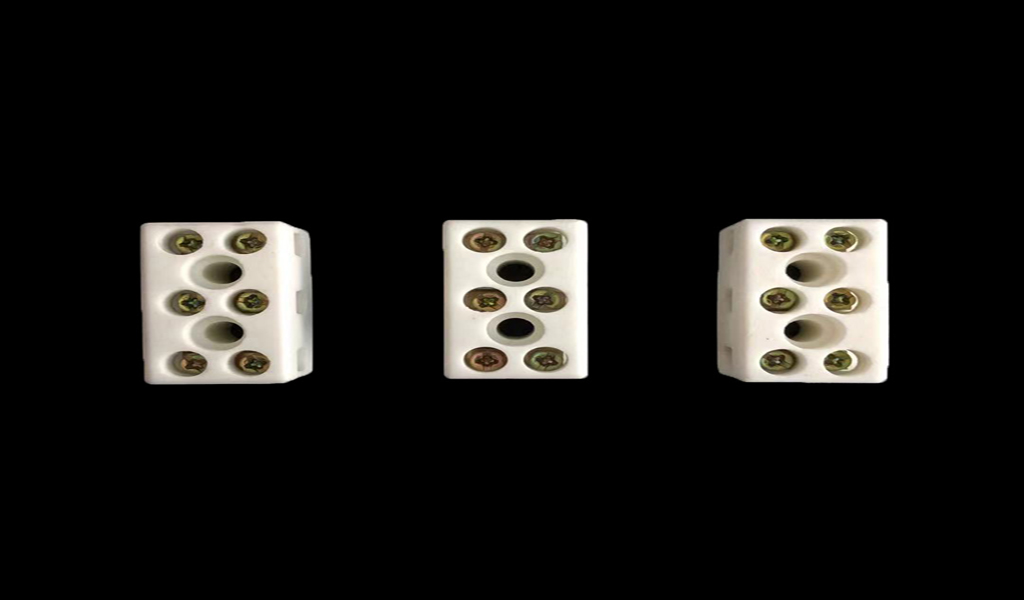Electronic ceramics are usually made of alumina ceramics with low dielectric constant. Below, Pintejin Ceramics Factory will introduce capacitor ceramics to you. Different ceramic components have different dielectric constants, so the obtained capacitor ceramics are not nearly the same. Low frequency ceramics with semiconductor capacitors.
Electronic ceramics used as capacitor dielectrics. This type of ceramics is used in a large amount and has many specifications and varieties. The main ones are high frequency, low frequency capacitor porcelain and semiconductor capacitor porcelain.
High-frequency capacitor porcelain, belonging to class I capacitor porcelain, is mainly used to manufacture high-stability ceramic capacitors and temperature compensation capacitors in high-frequency circuits. The main components of such ceramics are mostly titanates of alkaline earth metals or rare earth metals and titanate-based solid solutions.
Zirconia ceramic rod
Different ceramic compositions can be used to obtain high-frequency capacitor ceramics with different dielectric constants, dielectric loss tangent tanδ and dielectric temperature coefficient αε, to meet the needs of various temperature compensation. The barium tetratitanate porcelain in the table is not only a capacitor dielectric with high thermal stability, but also an excellent microwave dielectric material.

Low-frequency capacitor porcelain belongs to Class II capacitor porcelain, which is mainly used to manufacture ceramic capacitors for bypass, DC blocking and filtering in low-frequency circuits. The main features are high dielectric constant ε, large loss tangent and large change rate of tanδ and ε with temperature. Most of these ceramics are ferroelectric barium titanate (BaTiO3) as the main component, which is obtained by doping modification with high ε (up to 20,000 at room temperature) and low temperature change rate of ε. Low-temperature sintered low-frequency monolithic capacitor ceramics mainly composed of gentle phase-change ferroelectric lead magnesium niobate (PbMg1/3Nb2/3O3) are also important low-frequency capacitor ceramics.
Semiconductor capacitor ceramics are electronic ceramics that use the insulating layer formed on the outer surface of the semiconducting ceramic or the inner surface (grain boundary) between the grains as the capacitor dielectric. Among them, the boundary layer capacitor made of the dielectric properties of the ceramic grain boundary layer is a new type of high-performance, high-reliability capacitor with low dielectric loss, high insulation resistance and high operating voltage. This ceramic has extremely high apparent dielectric constant (up to 105 or more), low dielectric loss (less than 1%), high volume resistivity (higher than 1011 ohm cm), and high dielectric dispersion frequency (higher than 1 GHz). ), good moisture resistance, is a high performance, high stability capacitor dielectric. Ferroelectric ceramics, electronic ceramics with ferroelectric crystals as the main crystal phase. There are no less than a thousand ferroelectric crystals that have been discovered, but as the main crystal phase of ferroelectric ceramics, there are mainly perovskite or quasi-perovskite ferroelectric crystals or solid solutions.
Dispensing ceramic valve
In a certain temperature range, there is a spontaneous polarization in the crystal that can change direction with an applied electric field, which is the ferroelectricity of the crystal. When the temperature exceeds a certain critical value—the Curie temperature TC, the polarization intensity drops to zero, and the crystal loses ferroelectricity and becomes a general paraelectric crystal; at the same time, the ceramic nozzle crystal undergoes a ferroelectric phase to a paraelectric phase. phase transition. The polarization of ferroelectrics also changes drastically with the electric field.
An important microscopic feature of semiconductor ceramic manufacturers is the domain structure, that is, ferroelectrics have many small regions that are spontaneously polarized to saturation in a specific direction—electric domains. These differently oriented domains are separated by domain walls. Under the action of a relatively strong external electric field, this multi-domain crystal can be forced to orient to a single domain by the electric field. The dynamic process of the reversal of the orientation of the electric domain with the external electric field includes the movement of the domain wall and the nucleation and growth of new domains.
[wp_reusable_render id=2239]
